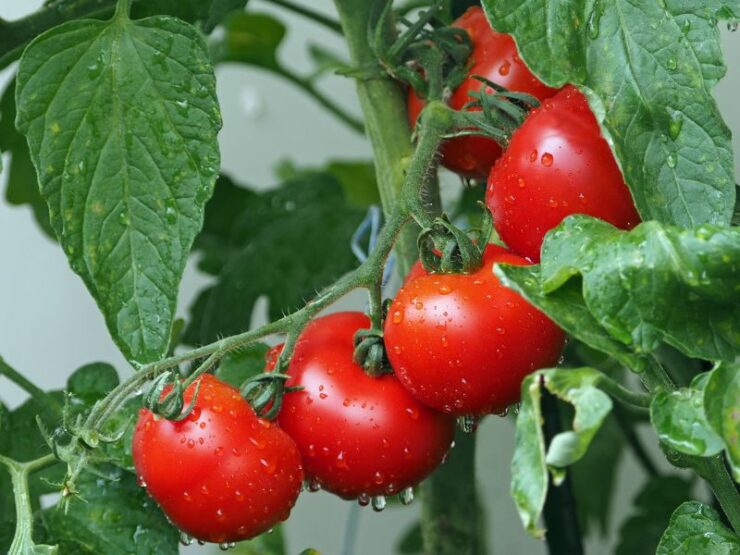If you’re a gardener in Texas’s USDA Hardiness Zone 9a, you might be wondering if there’s still time to start your tomato seeds. The answer depends on several factors, including your local climate, the type of tomatoes you want to grow, and your gardening goals. This guide will help you determine whether it’s too late to seed tomatoes and provide tips on how to succeed if you decide to start them now.
Understanding Zone 9a Climate
What Is Zone 9a?
Zone 9a is characterized by a relatively mild winter and a long growing season. In this zone, the average minimum temperature ranges from 20°F to 25°F (-6°C to -4°C). This means that you have a longer window for planting and growing vegetables compared to colder zones.
Growing Season Length
In Zone 9a, the growing season typically extends from early spring to late fall. This extended period allows for multiple planting opportunities, which is beneficial for crops like tomatoes that thrive in warm weather.
Tomato Varieties and Their Needs
Determinate vs. Indeterminate Tomatoes
Tomatoes come in two main types: determinate and indeterminate.
- Determinate Tomatoes: These varieties are compact and produce fruit all at once. They are ideal for container gardening and smaller spaces. Determinate varieties are generally better suited for earlier planting as they have a more defined harvest period.
- Indeterminate Tomatoes: These varieties continue to grow and produce fruit throughout the season. They are more forgiving if you plant them later in the season, as they will keep producing until the first frost.
Choosing the Right Variety for Late Planting
If you’re planting late in the season, consider choosing fast-maturing tomato varieties. These varieties will produce fruit more quickly, giving you a better chance of harvesting before the end of the growing season.
Timing Your Planting
Ideal Planting Times for Zone 9a
For Zone 9a, the best time to start tomato seeds indoors is usually 6-8 weeks before the last expected frost date. Since the risk of frost is minimal in Zone 9a, you have some flexibility.
- Spring Planting: Start seeds indoors in late winter to early spring. Transplant seedlings outdoors when they are about 6-8 inches tall and after the danger of frost has passed.
- Summer Planting: You can also start seeds in mid to late summer for a fall harvest. This is particularly useful for indeterminate varieties that will continue producing into the fall.
Using a Frost Calendar
In Zone 9a, it’s important to use a frost calendar to determine the best planting times. Check local frost dates to plan your planting schedule and avoid the risk of frost damage.
How to Seed Tomatoes Indoors
Preparing Your Seedlings
Starting tomato seeds indoors gives you a head start and allows you to control the growing conditions. Here’s how to do it:
- Choose the Right Containers: Use seed trays or small pots with good drainage.
- Select Quality Soil: Use a seed-starting mix or a light, well-draining soil.
- Plant the Seeds: Sow seeds about ¼ inch deep and keep the soil moist.
- Provide Light: Place the containers under grow lights or in a sunny window.
- Maintain Temperature: Keep the soil temperature around 70-75°F (21-24°C) for optimal germination.
Transplanting Seedlings
Once seedlings have developed their second set of true leaves, they are ready to be transplanted. Harden them off by gradually exposing them to outdoor conditions over a week before planting them in the garden.
Outdoor Planting Tips
Soil Preparation
Tomatoes prefer well-drained, nutrient-rich soil. Before planting, amend the soil with compost or well-rotted manure. Ensure the soil pH is between 6.0 and 6.8 for optimal growth.
Planting in the Garden
- Spacing: Space tomato plants 18-24 inches apart to allow for their mature size.
- Depth: Plant tomatoes slightly deeper than they were in their pots to encourage strong root development.
- Mulching: Apply mulch around the plants to retain moisture and suppress weeds.
Watering and Fertilizing
Tomatoes require consistent watering to prevent stress and blossom end rot. Water deeply but infrequently, allowing the top inch of soil to dry out between waterings. Fertilize with a balanced fertilizer or one specifically formulated for tomatoes.
Pest and Disease Management
Common Tomato Pests
- Aphids: Small, soft-bodied insects that can be controlled with insecticidal soap or neem oil.
- Tomato Hornworms: Large caterpillars that can be removed by hand or treated with organic pesticides.
Common Tomato Diseases
- Early Blight: A fungal disease causing dark spots on leaves. Prevent by rotating crops and avoiding overhead watering.
- Late Blight: A serious disease that can affect tomatoes late in the season. Remove infected plants and avoid planting tomatoes in the same spot each year.
Conclusion
In Zone 9a, it’s generally not too late to seed tomatoes, especially if you choose the right varieties and follow proper planting and care techniques. Whether you’re planting in the spring for a summer harvest or starting seeds in the summer for a fall crop, tomatoes can thrive in the extended growing season of this zone. By understanding the local climate, selecting appropriate varieties, and managing your plants effectively, you can enjoy a bountiful tomato harvest well into the fall.











Add comment